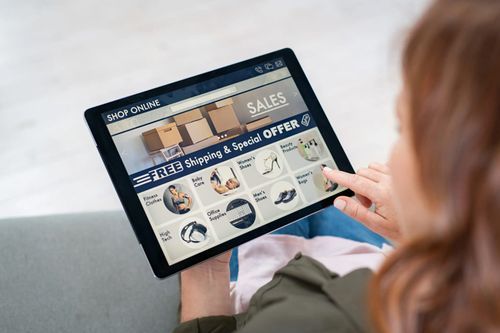
“Our time to market is impressive for an enterprise solution. It’s a competitive advantage in the market that we can make major product changes every two months.”
—Cédric Guyot, CEO, Virtual Reality at Kantar Retail
Challenge:
Implement a more formal Agile approach while preserving the company’s innovative culture.
Industry:
Technology, Retail
Solution:
SAFe®
Results:
- Delivery of major releases down from 6 to 2 months
- Time to market decreased from 9 to 3 months
- Time to respond to client feedback down from 3 months to 1 month
- 27.5% decrease in cost per epic
- 41% to 28% decrease in the attrition rate
- 36%-43% increase in team productivity due to clear job responsibilities and processes
- Easier talent acquisition and retention due to openness and transparency
Best Practices:
- Gain buy-in through results—To sell leadership on SAFe, managers frequently demonstrated value. “Once we started to improve and measure our results, upper management came on board,” Vavriv says.
- Be patient—Change takes time. Once implemented, you’ll begin seeing progress, accelerating the pace of change.
- Involve HR—Clearly define roles and performance standards (KPIs) for each role. Kantar Retail’s HR representative attended SAFe training.
- Gradual implementation of SAFe framework—“Start implementation with basic things on the Team level after starting with the Program level and constantly improve Portfolio-level decisions,” Yevgrashyn says
Introduction
Kantar Retail develops Virtual Reality (VR) solutions that enable their retailer and manufacturer clients to research and design retail experiences to meet the needs of shoppers and keep up with the constantly changing retail landscape. Retail design and research in virtual reality drive time to market and more effective collaboration and is faster, more economical and more confidential than prototyping in physical stores.

Part of WPP Group, the world leader in marketing communications services, Kantar Retail is a leading insight, technology and consultancy company that works with retailers such as Walmart, Target and Marks & Spencer. They also work with global consumer goods businesses including Kimberly-Clark, Unilever & GSK.
In 2013, Kantar Retail set out to develop a new VR solution for the retail and consumer goods industry. The company had explored using Agile practices with small teams, but the effort was “disorganized and disjointed,” says Dmytro Vavriv, PhD, Delivery Unit Manager at Kantar Retail. As a small company that prides itself on innovation, members across the organization were concerned that a more formal Agile approach could stifle ideas.
Prepping for PI #1
When Kantar Retail began developing the latest version of its solution, the company made a key decision to build its capacity and chose to deploy the Scaled Agile Framework® (SAFe®) to support that effort.
Development teams are located in Ukraine, the United Kingdom, and the U.S. For road-mapping the first Program Increment (PI), Kantar Retail engaged just one, a six-person team in Kiev. As the team prepared for its first SAFe planning session and PI, the Delivery Unit Manager and the Release Train Engineer (RTE) took the four-day Implementing SAFe 4.0 course and earned the SAFe 4.0 Program Consultant (SPC4) certification.
Leading up to kickoff, Kantar Retail faced some tough questions. First, they were uncertain how long the PI duration should be. While the business was pushing for a short timeframe, team members felt like they needed a longer window.
They also had concerns about the planning session itself. Past sessions typically covered just one sprint. This time they would need to cover seven sprints, decide on features and analyze dependencies with other teams. They also needed to develop a vision for the next two PIs. Would two days be enough?
“From a product perspective, the first PI was a challenge because the team had just started working on the product, and from a technical perspective the teams didn’t know the code well yet,” Dmytro Tsybulskyi, RTE says.
Ultimately, the group covered everything in a 2-day session. They settled on a 3½-month PI, but didn’t quite meet the planned scope on the first try—requiring 4½ months. Yet, they still delivered under the usual six-month timeframe and took away valuable lessons for the next round.
PI2 ran significantly more smoothly. Kantar Retail brought in more teams and trained all team leads beforehand. Prior to the PI boundary, teams discussed possible roadmaps and dependencies, as well as technical questions. That made it so that, in planning, they found it easier to put features on the program board and establish a vision for upcoming PIs. Plus, they had greater confidence in setting a shorter PI timeframe—this time 3 months.
Enhancing Innovation
As of now, half the company is trained in SAFe, and Kantar Retail has completed four major releases. “We started out with a small team of 6 engineers in Kiev and have grown to 30 now, including all aspects of software delivery, QA, Scrum Teams, and UI/UX,” says Paul Gregory, Chief Technical Officer, Virtual Reality at Kantar Retail.
With the help of experienced SPC and Agile coach Timofey Yevgrashyn, Kantar Retail has also implemented SAFe fully on the Team and Program levels. To their surprise, Kantar Retail found that teams were more proactive regarding innovation on the product—due to the sharing of responsibilities, and by separating activities on business deliverability and innovation.
“Participation of all team members in the Leading SAFe class helped to clarify roles and responsibilities and simulate key activities in the SAFe framework,” Yevgrashyn says.
The newly implemented SAFe methodology additionally resulted in a shared vision, more visibility and predictability, a higher-quality solution, and an increased ability to respond to market and customer demands.
“We’ve adopted an enterprise framework for agility, the SAFe framework,” says Eric Radermacher, Product Manager, Virtual Reality at Kantar Retail. “We’ve been more consistent. We’ve been able to articulate a roadmap to the business and to our clients and deliver in time and in full, which is a really positive milestone.”

Sharpening the Competitive Edge
With the help of SAFe, Kantar Retail brought the latest version of its product to market. Cloud-based Kantar Retail VR Infinity™ provides all the content for the creation of virtual store projects. It puts VR technology directly in the hands of the users, and connects teams and customers to understand issues and opportunities quickly, leading to faster and more effective retail decision-making.
The company measured very clear benefits from its Agile journey:
Delivery
- Delivery of major releases down from 6 to 2 months
- Time to market decreased from 9 to 3 months
- Reduced time to respond to client feedback from 3 months to 1 month
- Greater predictability, which enhances client satisfaction
“Our time to market is impressive for an enterprise solution,” Cédric Guyot, CEO, Virtual Reality at Kantar Retail says. “It’s a competitive advantage in the market that we can make major product changes every two months.”
Finance
- 27.5% decrease in cost per epic
Human Resources
- 41% to 28% decrease in the attrition rate
- 36%-43% increase in team productivity due to clear job responsibilities and processes
- Easier talent acquisition and retention due to openness and transparency
Given those metrics, top management is now fully behind SAFe.
SAFe not only elevates internal team satisfaction and hiring; the sales team now brings the company’s time to market into conversations with prospects.
“The sales team uses this as a way to engage with clients,” Dmytro Vavriv says. “We can say, ‘Here are stats showing our predictability and here’s our vision.’”
Share:
Back to: All Case Studies
Suggested Case Study:
Travis Perkins